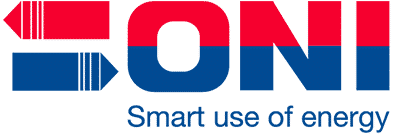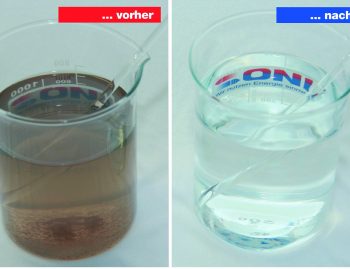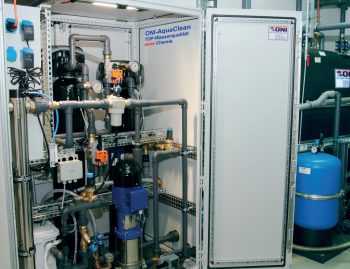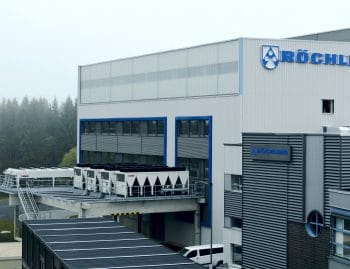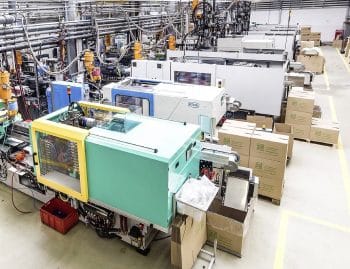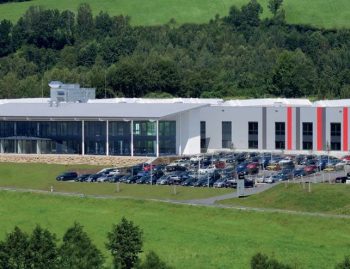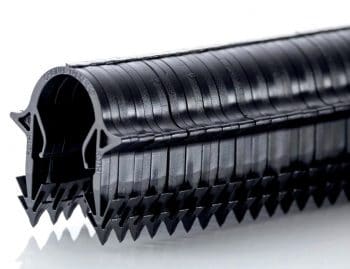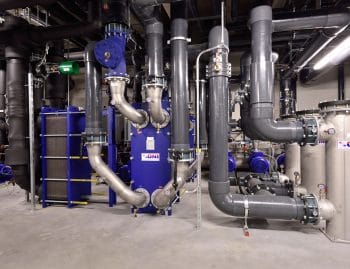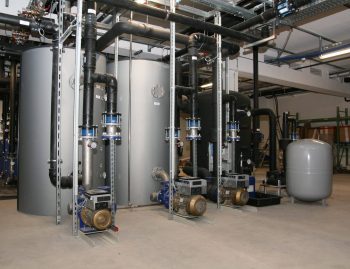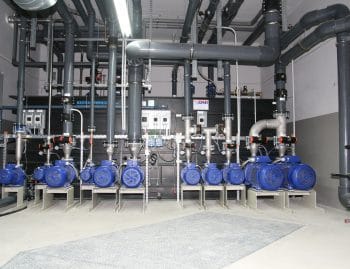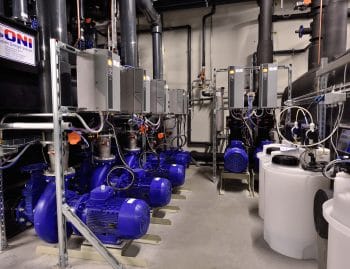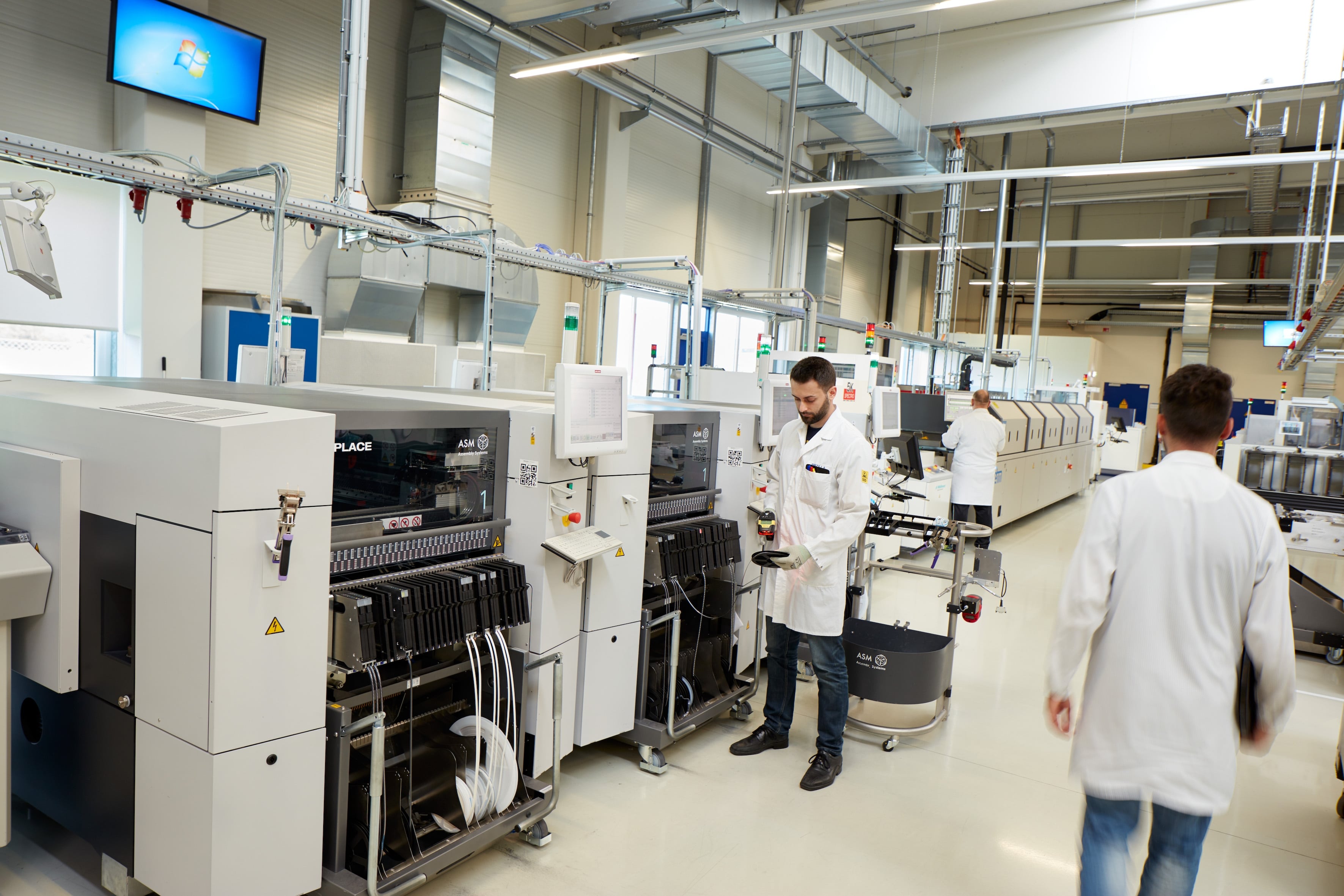
Energy saving strategically planned
Bringing light into the darkness - that is the core competence of the Austrian company ZKW. The specialist for complex lighting systems in vehicle construction plans further qualitative and quantitative growth - with state-of-the-art injection moulding technology and a consistent strategy to reduce energy costs.
ZKW's concept, which is obviously successful, is a narrow product range at first glance, but one that is extraordinarily deep. The consistent focus on the development and production of innovative and complex lighting systems for the passenger car, truck and motorcycle markets has led to high market penetration, particularly in the premium segment. ZKW is also clearly benefiting from the trend towards individualisation of lighting systems in vehicle construction and their increasing use as design elements. In addition, plastics are increasingly replacing metallic components. As ZKW operates the vapour deposition technology in-house, it also has the know-how for surface refinement of both material groups.
The development of the market in conjunction with high manufacturing know-how, state-of-the-art production facilities and innovative product ideas have contributed to the company's above-average growth over the past ten years. Although there was also a significant slump at ZKW in 2008 and 2009, this did not harm the strategy. ZKW used this breathing space for various measures to further increase efficiency, such as the creation and implementation of a completely new energy concept together with energy-saving specialist Oni and the further optimisation of injection moulding technology with machine supplier Engel.
At its Wieselburg headquarters, located between Linz and Vienna, the company operates around 110 injection moulding machines with clamping forces between 2500 and 11,000 kN, most of them in the 6500 to 9000 kN size class. Wideplate systems with a clamping force of 11,000 kN, but equipped with the platen size and peripherals of a 17,000 kN machine, are a special feature. Most of the machines are from Engel, more than 70 are in Wieselburg and more than 30 at the ZKW site in Slovakia.
Modern injection moulding technology dominates production
The energy-intensive production area of injection moulding technology was and is the ideal starting point for a new, ongoing concept to reduce energy consumption throughout the company: On the one hand, the machinery has a favourable energy balance thanks to modern drive and control technology. On the other hand, energy-saving potential was identified and successfully exploited in several directions in the generation of cooling energy for production. The necessary cooling is particularly energy-efficient and the heat generated in hydraulics and cooling circuits is optimally utilised. ZKW has had experience with various Oni technologies since 2000. This is the only way the company has managed, for example, to keep gas consumption for heating the halls and administrative units constant over ten years despite enormous growth. The renewed expansion and new construction of the administration was finally the impetus to jump to the next level of energy saving.
Sensibly using the entire energy volume
To date, only the energy of the hydraulic circuits has been used to feed the low-temperature hall heating systems via heat exchangers. Today, the additional waste heat generated during the generation of cooling water for tool cooling via chillers is not destroyed at high cost, but used sensibly. The flow temperatures for tool cooling are 16 °C (at 20 °C return flow) and 35 °C (at 42 °C return flow) for hydraulics. The high temperatures for hydraulic cooling can be maintained because all Engel machines used by ZKW are equipped ex works with so-called tropical coolers. Under normal ambient conditions, the glycol-free, idle free coolers are sufficient to reliably supply the machines with cooling water. Energy-intensive compressor cooling systems are not required, even at high outside temperatures. Pressure boosting systems on the machines are also not required.
In addition to the hydraulic and mould cooling systems of the injection moulding machines, other heat sources in the company are "skimmed off": Compressors with oil coolers whose excess energy is used are used to generate compressed air. The same applies to the water-cooled chillers in the air conditioning systems.
The entire energy technology is particularly efficient due to the networking of different technologies and circuits. Overall, the performance values in the company are impressive:
- Around 3020 kW cooling capacity in the 35/42 °C range is installed via free coolers that can be operated very cost-effectively. Currently, 1260 kW are required for hydraulic cooling in the injection moulding sector and 1120 kW for cooling the chillers. The rest is required for the recooling of the air conditioning and refrigeration system. A further 1000 kW reserve can be activated by using well water.
- For tool cooling and some other consumers in the 16/20 °C circuit, 1010 kW cooling capacity is available via air- and water-cooled chillers with winter relief via free coolers.
- Cold water in the 6/12 °C range for air-conditioning and ventilation technology and as a reserve for tool cooling is generated with up to 2000 kW with chillers.
- In addition, a circuit with 50/70 °C of 365 kW is used for heat recovery from compressed air generation.
These performance data provide ample scope for effective heat recovery systems: A total output of 2380 kW is provided in the form of circulating air heaters for offices and halls as well as for the paint shop. This corresponds to an energy gain of around 5200 MWH, or - at an imputed 50 euros per megawatt hour - around 260,000 euros per year. In addition, the recovery from the heating water circuit adds up to about 650 MWH or 33,000 Euro per year. The cost savings from the heat recovery add up to the considerable energy savings from the use of free coolers for winter relief. The use of chillers can be dispensed with in a wide temperature range.
Cost-effective air conditioning of one hectare of office space
The three office buildings with together about 10,000 m² of usable space correspond to the most modern building standards and are air-conditioned with groundwater (use of ground cooling). In winter, the air-conditioning technology requires a thermal output of 400 kW for preheating the air. This demand is primarily generated from waste heat from production and is only covered by a groundwater heat pump in an emergency. In addition, a gas-fired emergency heating system is available, which is also intended for use in non-production times, but has not yet been required. As the heating demand is higher than the waste heat share from the machines due to the dynamic development of the company, the water-cooled heat pump is used to cover the demand. In this specific case, the waste heat is used for heating purposes and the cooling energy generated is made available to the mould cooling circuit. When operated in this way, the investment for the heat pump pays for itself with a payback period of around 18 months. A particularly clever side effect: the pump can also be used in conjunction with the free coolers as a pure "cooling machine" - which results in a cost-effective redundancy measure for tool cooling if there is no need for heat in the offices.
One secret of the success is - in addition to the integrated overall concept - the control of the system. Defining the right switching points between the various options and ensuring the fresh air supply requires some experience. A sophisticated visualization of the entire system enables constant monitoring from a central workstation. In the event of error messages, it can be very quickly determined where intervention is required. It is noticeable that when visiting the halls at ZKW in mid-December 2011, the typical plastic odour is hardly present. Obviously the ventilation works very well despite the efforts to save energy.
Convert large machines in minutes
ZKW is currently investing again in machine technology. At the end of 2011 and beginning of 2012, a "twin system" was set up - two Engel Duo 7050/1100 WPX large machines, each with a Viper 60 linear robot and a Famox 25/2 tool changer with multi-coupling, both also from Engel. The type abbreviation WPX in the machine designation stands for Wideplate version: The technical data of the machines corresponds to that of an 11,000 kN machine in series production, but the installation space is roughly the same as that of a 17,000 series version.
For the first time in this installation, a tool changer serves two large Engel machines. The acronym Famox stands for the program: Fast Mold Exchange. ZKW wants to use this technology to reduce the set-up times for tools weighing up to 23 tons from an average of 2.5 hours to around 6 minutes. This should be very much in line with the development of ZKW's successful core segment: Here one concentrates on the smaller to middle series of lighting systems in the rather high-priced vehicle segment, which are ever further individualized and require accordingly frequent changes. ZKW typically retrofits machines of this size about three times a week. The potential savings can be easily calculated. In addition, the changeover device makes retrofitting considerably safer because certain problems and risks, such as damage to the moulds, cannot arise in the first place.
Like the robots, the shuttle table is integrated into the operating philosophy of the injection moulding machine. The operating logic, visualization and ergonomics of the CC 200 controller are used here. All mould and machine parameters are transferred between the machine and the mould changing system without external interfaces. The graphic display of the tool changer can be called up both on the table itself and on the machine. In addition, two other aspects are to contribute to the high set-up speeds: the integrated tool preheating station and the standardized multi-coupling for the media lines, the latter of which was implemented here for the first time. Instead of using chain drives as is usual with other systems, the Famox system works with patented direct roller drives. Here, each roller has its own electric motor, which is intended to ensure special robustness. The automatic tool changing system is designed for tools up to 25 tons, a smaller and a larger version are in preparation according to the manufacturer.
In addition, the machines are equipped with ONI Rhytemper temperature control systems, which reduce cycle times and at the same time ensure the quality of the optically highly sophisticated headlight components. With this system, ZKW will be in a position to significantly improve the efficiency of the injection of large-volume, optically and technically demanding parts in a single step.
Forecasts confirmed
Saving energy without sacrificing performance could be summarised in ZKW's investment strategy: In recent years, only injection moulding machines and peripheral systems have been put into operation that are particularly energy-efficient on the one hand and guarantee precision and consistency for the technologically demanding core product of lighting technology on the other. With the latest "twin system" consisting of two large Engel machines with a central tool changing system, the next leap in efficiency and flexibility is currently being achieved by significantly reducing changeover times. Despite modern machines, injection moulding technology inevitably produces large amounts of waste heat - which can be used sensibly. With amortization times that are sometimes astoundingly short, heat recovery systems reduce production costs sustainably. In most cases, however, the use of simple heat exchangers is not enough. Conclusive concepts and control mechanisms are needed to raise the overall system to an attractive level of efficiency. This also includes details such as the clever use of the "tropical cooling" of Engel machines in the Alpine country.
After around 1.5 years of real operation, the forecast values from ONI's planning have been confirmed, as the results to date show. Accordingly, comparable technologies have also been implemented at the ZKW site in China. A longer but still very interesting payback period of around 3.5 years is expected here.
